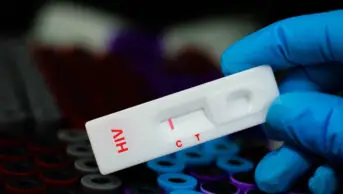
Shutterstock.com
The appeal of a clinical pharmacy role in my new local primary care network (PCN) — specifically created as part of the ‘NHS long-term plan’ to integrate the profession into multiple GP surgeries — proved too much for me, a community pharmacist, to resist.
Managing a busy pharmacy in West Sussex came with its challenges, but it became repetitive and unfulfilling; I didn’t feel like I was making any clinical impact. I was checking the same items over and over again, and prescribing issues had to go through the normal long-winded channels of GP receptionists and medicines teams.
No more: I’m now in an exciting new post with so much potential and a real chance to effect change across multiple GP practices.
I’m one of the first PCN pharmacists to be employed since the networks were officially formed on 1 July 2019. I started just a week later, so I hit the ground running and was a part of my PCN’s initial decisions and meetings. My PCN is formed of three surgeries in Coastal West Sussex, which look after more than 30,000 patients. I work at the busiest surgery two days per week and at the other two surgeries for one day each per week.
The main difference between my job as a community pharmacist and my PCN role is that I’m now able to choose what I focus on.
There’s so much that we can do to improve prescribing safety and monitoring of medications. It’s great to be able to choose a subclass of a drug and get stuck into the patient data to find patterns and solve problems. Sometimes a problem has always been there; it just needed someone with the time to look into it.
For example, I’ve just finished an audit on patients taking direct oral anticoagulants (DOACs). It was eye-opening to find that in some surgeries, more than half of patients on DOACs needed an up-to-date blood test or dosage review — there just isn’t enough resource to keep on top of these things. That’s where PCN pharmacists come in: we are the focused, medication-centred health professionals who can look at high-risk drugs and initiate protocols to prevent under-monitoring and dosage errors.
I typically start the day as a normal surgery-based pharmacist; I go through hospital discharges and medication queries.
I’ll then put my energy into auditing the practice I’m in at the time, as well as comparing data from the other two practices I work in, to come up with a combined action plan to effect the most positive change. The rest of my day will normally involve meetings with prescribers or surgery staff to develop action plans to snap up as many under-reviewed or under-monitored patients as we can and get the entire surgery team’s support for an audit that I’m conducting.
From time to time, I also hold PCN meetings with the three lead GPs from each practice, alongside their practice managers, to make sure everyone is on the same page, and that all of our individual practice goals are being met, alongside the PCN’s wider goals.
No surgery is identical — that’s what makes this role so interesting. You may have one surgery that’s doing well in a particular clinical area or patient group, and you can use that as a model in a surgery that may be struggling with the same issue.
Some problems are universal and need a one-size-fits-all approach. I’m planning an opioid and benzodiazepine overhaul of the three practices. It’s time to focus on the patients who have been left by the wayside to order repeat after repeat of their pain medications, while waiting for their ever-pending pain review.
And with my prescribing course starting in a couple of weeks — with care of older people agreed as my scope of practice — I’ll eventually be able to effect even more change through prescribing, or certainly deprescribing, for my PCN patient base.
Taking the leap into the unknown is scary, but this role is establishing pharmacy in primary care practice, and I’m excited to see where it goes.
Danny Bartlett, clinical pharmacist, Coastal West Sussex Clinical Commissioning Group

